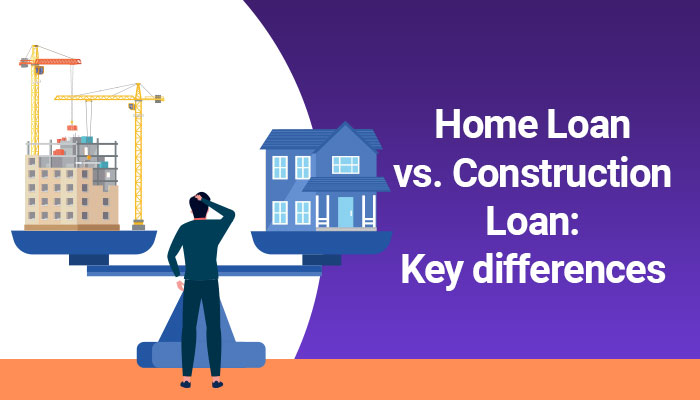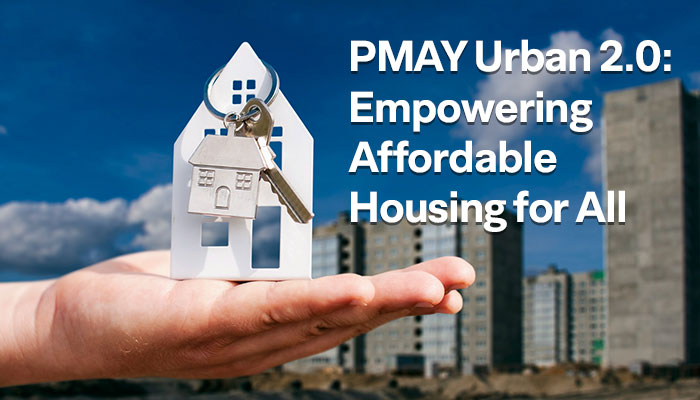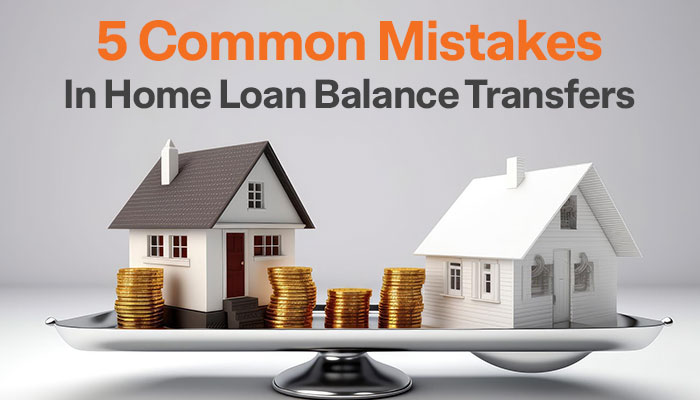Home Loan Vs Construction Loan: What is the Difference?

The prospect of owning a home is a dream for many. However, the financial journey to realizing that dream can be complex. Two primary loan options stand out: home loans and home construction loans. Each has its own set of features, benefits, and drawbacks. Understanding the nuances between them is crucial for making informed decisions.
Home Loans: In-depth look
Understanding what is a home loan is easy. It is a secured loan provided by a bank or financial institution to help individuals purchase a residential property. The property itself serves as collateral for the loan. Let's understand the key features, eligibility criteria, and application process of home loans.
Key Features of Home Loans
- Fixed and Variable Interest Rates: Home loans come with either fixed or variable interest rates. Fixed rates remain constant throughout the loan tenure, providing predictability in monthly payments. Variable rates, however, fluctuate based on market conditions, which can lead to changes in monthly payments.
- Loan Tenure and Repayment Terms: Home loans typically have long tenures, ranging from 10 to 30 years. Repayment is made in equated monthly instalments (EMIs), which include both principal and interest components.
Eligibility Criteria
-
Credit Score Requirements
Lenders assess an applicant's credit score to determine their creditworthiness. A high credit score can lead to favorable loan terms, including lower home loan interest rates. -
Income Verification and Employment Stability
Lenders require proof of stable income and employment. This ensures that the borrower can repay the loan. Documents such as salary slips, bank statements, and employment letters are commonly needed.
Application Process
- Documentation Needed: Applicants need to submit various documents, including proof of identity, address, income, and the property's legal documents.
- Steps to Apply: The application process involves filling out the loan application form, submitting the required documents, and undergoing a credit assessment. Upon approval, the loan agreement is signed, and funds are disbursed.
Construction Loans: Detailed Explanation
A home construction loan is a short-term loan that is used to finance the building of a new home. Unlike home loans, these funds are not disbursed in a lump sum. Instead, they are released in stages as the construction progresses. Let's understand the key features, eligibility criteria, and the application process of home loan for construction house.

Key Features of Construction Loans
- Interest-Only Payments During Construction: During the construction phase, borrowers typically make interest-only payments. This helps manage cash flow until the construction is complete.
- Conversion to Permanent Mortgage: Once construction is complete, the loan can be converted into a permanent mortgage. This is known as a construction-to-permanent loan, which simplifies the financing process.
Eligibility Criteria
- Creditworthiness and Financial Health: Lenders assess the borrower's creditworthiness and financial health. A solid credit history and sufficient income are crucial for loan approval.
- Detailed Construction Plan and Budget: A comprehensive construction plan and budget are required. Lenders need to ensure that the project is feasible and that the funds will be used effectively.
Application Process
- Required Documentation: Borrowers need to provide detailed construction plans, contractor agreements, and proof of land ownership along with standard loan documents.
- Step-by-Step Application Guide: The process involves submitting an application, getting approval for the construction plan, and receiving funds in stages as the project progresses.
Key Differences: Home Loan vs Construction Loan
Now that you have understood the nitty-gritty of home loans and construction, let's compare them based on various features. This will help you understand the advantages and disadvantages of both loans.
| Feature | Home Loans | Construction Loans |
|---|---|---|
| Advantages | ||
| Predictability and stability | High | Low |
| Easier qualification and approval | Yes | No |
| Customisation and personalisation | No | Yes |
| Potential for equity growth | Moderate | High |
| Disadvantages | ||
| Limited to pre-constructed properties | Yes | No |
| Higher risk and complexity | Low | High |
| More stringent qualification criteria | No | Yes |
Choosing the Right Loan for your needs
Between home loans and construction loans, choosing the right one is of utmost importance. Keeping the following points in mind can help you decide better.
-
Assessing Your Financial Situation
Evaluate your financial health and stability. Consider your income, expenses, and long-term financial goals. -
Evaluating Your Property Plans and Goals
Determine whether you want to buy an existing home or build a new one. Assess the feasibility and benefits of each option.
-
Consulting with Financial Advisors
Seek advice from financial advisors to understand the best loan option for your specific needs. -
Making an Informed Decision
Consider all factors, including costs, risks, and long-term benefits. Make a well-informed decision that aligns with your financial goals.
Wrapping Up
The decision between a home loan and a construction loan is a crucial one. Understanding the intricacies of each, assessing your financial situation, and considering your long-term goals will empower you to make the right choice. By carefully weighing the pros and cons, you can embark on your homeownership journey with confidence. Explore IIFL Home Loans for expert guidance and competitive rates. Take the first step towards securing your dream home today.
FAQs
Q1. What are the primary differences between home loans and construction loans?
Home loans provide funds in a lump sum for purchasing existing properties, while construction loans release funds in stages for building new homes.
Q2. Which loan type is better for building a custom home?
Construction loans are ideal for building a custom home, offering flexibility and tailored financing options.
Q3. Are interest rates higher for construction loans?
Yes, construction loan rates of interest generally have higher interest rates due to the increased risk associated with construction projects.
Q4. Can construction loans be converted to home loans?
Yes, construction loans can be converted to permanent home loans after the construction phase is completed.
Q5. What are the eligibility criteria for home loans and construction loans?
Eligibility criteria for both loan types include a good credit score, stable income, and financial health. Construction loans also require detailed construction plans and budgets.
Tags
Disclaimer: The information contained in this post is for general information purposes only. IIFL Home Finance Limited (including its associates and affiliates) ("the Company") assumes no liability or responsibility for any errors or omissions in the contents of this post and under no circumstances shall the Company be liable for any damage, loss, injury or disappointment, etc. suffered by any reader. All information in this post is provided "as is", with no guarantee of completeness, accuracy, timeliness, or of the results, etc. obtained from the use of this information, and without warranty of any kind, express or implied, including, but not limited to warranties of performance, merchantability, and fitness for a particular purpose. Given the changing nature of laws, rules, and regulations, there may be delays, omissions, or inaccuracies in the information contained in this post. The information on this post is provided with the understanding that the Company is not herein engaged in rendering legal, accounting, tax, or other professional advice and services. As such, it should not be used as a substitute for consultation with professional accounting, tax, legal or other competent advisers. This post may contain views and opinions which are those of the authors and do not necessarily reflect the official policy or position of any other agency or organization. This post may also contain links to external websites that are not provided or maintained by or in any way affiliated with the Company and the Company does not guarantee the accuracy, relevance, timeliness, or completeness of any information on these external websites. Any/ all (Home/ Loan Against Property/ Secured Business Loan/ Balance Transfer/ Home Improvement Loan/ NRI Home Loan/ Home Loan for Uniformed Services) loan product specifications and information that may be stated in this post are subject to change from time to time, readers are advised to reach out to the Company for current specifications of the said (Home/ Loan Against Property/ Secured Business Loan/ Balance Transfer/ Home Improvement Loan/ NRI Home Loan/ Home Loan for Uniformed Services) loan.
 Login
Login






















